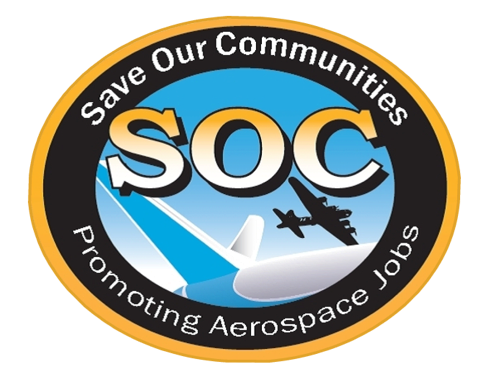Save Our Communities (SOC), a non-profit organization, was incorporated in 1992 for the sole purpose of preserving the role of Paine Field as agreed to in the Mediated Role Determination of 1978/79 (the MRD). It is an organization comprised of thousands of citizen volunteers representing every town in the general vicinity of Paine Field. Volunteers from every conceivable demographic have combined their time, energy, and expertise to create a very effective ‘grass roots’ organization.
Originally, SOC evolved from the ‘Committee To Let The People Decide’, a loosely organized Mukilteo-based citizen group brought together by the 1988 airport role controversy over the possibility of night cargo flights at Paine Field. The cargo flight issue evaporated relatively quickly, and the organization remained dormant for a few years.
But in early 1992, based on SeaTac Airport’s claimed need for more capacity, a Puget Sound regional planning organization called the Puget Sound Air Transportation Committee (PSATC) was formed to evaluate possible alternatives to the construction of a third runway at SeaTac. This process produced a large draft study (called Flight Plan) that evaluated well over a dozen possible sites for a supplemental airport in the Puget Sound region. And, one of their prime candidates was Paine Field.
This situation provided the impetus for the transition to a more formal organizational structure in which to operate, particularly with regard to fundraising activities. From its recently adopted title of ‘Committee To Stop SeaTac Expansion Onto Paine Field’, the group incorporated in the spring of 1992 as a non-profit organization under the name of Save Our Communities. The new name emphasized the fact that the Paine Field issue was a regional issue – one involving all of Snohomish County as well as parts of King and Island counties
From its inception in early 1992 – at a meeting of a half dozen concerned citizens in a Mukilteo home – SOC grew very quickly. Over the next year and a half, SOC led a region-wide effort to point out the many reasons why Paine Field was not a viable choice to be the PSATC’s ‘preferred alternative’. At the peak of SOC’s activity level, there were fourteen different functional committees in operation. These included strategy/technical, legal, economic, legislative, graphics, schools, environmental, public relations, and research. At first, coordination was a bit difficult, but soon an incredible synergy of commitment, talent, and resources took place – and produced results.
Some examples of SOC activities were: large weekly meetings in school auditoriums, school ‘penny drives’, PSATC meeting attendance, critiquing large reports, obtaining petition signatures, placing signs & banners, regional lobbying, neighborhood canvassing, fundraising events, telephone trees, etc. It was something to behold, and the communities worked together as never before.
Nearly all of the governmental bodies in our region were united in their opposition to the selection of Paine Field as the preferred alternative. Everyone pulled together, and it turned out to be a very effective combination because, in mid-1993, the PSATC announced that their preferred alternative was to be the third runway at SeaTac.
Since 1993, SOC has not been active unless a specific threat to the Mediated Role Determination (MRD) presented itself. Thus, in the decade following the PSATC battle, SOC was active only during the 1995 and 2002 Paine Field Master Plan processes. [An airport master plan is an FAA prerequisite for continued federal airport funding.] On both of those occasions, a SOC representative participated as a member of the Master Plan Advisory Committee. The committees were in fact advisory only – they had no decision making role whatsoever – and the resulting Plans reflected that fact very clearly.
After the last Master Plan update in 2002, it appeared that SOC would not have to be active again for some time. However, that impression was about to be shattered!
